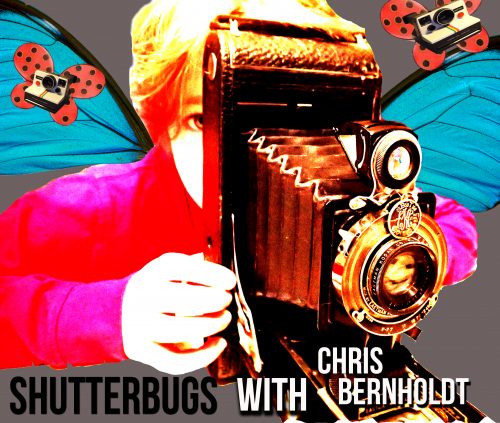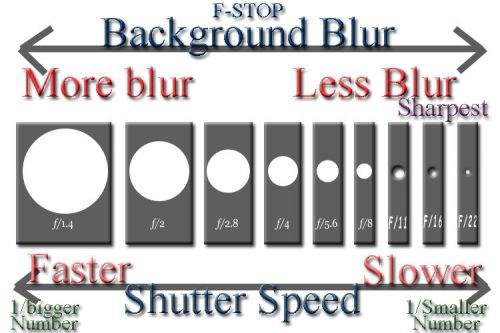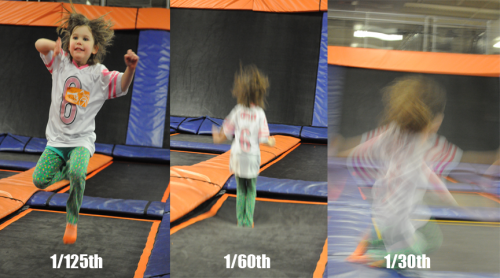So you know all about the aperture now. It’s time to take a look at the second most important feature of every camera, the shutter. To make a workable camera, you only need three things: a light tight container, a hole for the light to enter, and a door that you can open and close to let or prevent light from entering when you don’t want it to. This door is essentially the shutter.
The shutter is important for determining how quickly or slowly you are allowing light to enter the camera to record an image. You know those numbers that your camera records? Besides the F stop which is recorded in whole numbers or decimals, the shutter speed is measured by seconds or fractions of a second that it is open. On your camera, 250 really means 1/250 of a second. This determines how long the shutter is open and how much light comes into the camera.
The faster the shutter speed, the more you have a chance of freezing action in mid-air. Slower shutter speeds are going to blur action shots. Freezing action is going to be wholly dependent on your camera’s lag time, which is time between shots and how quickly it can record that image. My Nikon D50 can shoot up to 1/4000th of a second under perfect lighting conditions and my Samsung NX300 can shoot up to 1/6000th of a second under the same conditions.
Here’s the trick though. If you want to freeze action, you need a fast shutter speed. Because the door is open for shorter amount of time, you have to compensate to find a balance. This is where the aperture comes in. If the door is open less, you need a larger opening (aperture) to let in more light. Because you are opening up the F Stop, you are allowing more background blur. With the larger aperture, there is less depth of field as we saw in our first lesson.
What you should see is a progression from slower shutter speeds like 1/60th of a second being more blurry. In some cases, like the far right picture, because the shutter is open and the subject is still moving, you get double or triple exposures before the door can close. In the middle there is still blurring but some areas are sharp. By the time you get to 1/25th of a second, most of the action is captured with minimal blurring. In the 1/250th of a second photo, which is twice the far left’s speed, we can see frozen action.
You may also notice how the overall darkness of the image is being captured as well. at 1/3oth, it is fairly light because the aperture is quite small. Because in the end photo, the shutter is open for less time, the aperture must be much larger to accommodate more light.
Assignment #2 Shutter Speed and Blur
Now it is your turn to try what you learned about shutter speeds with your kids. For this one, the kids start out as the subject. Again, you will be experimenting with the settings on your camera. Try and use the “S” setting which stands for Shutter Speed.
Subject: Your kid(s) running, jumping, cartwheeling to their hearts content. Take them somewhere where they can get some exercise and repeat an action over and over.
Assignment : Shoot your subjects being active at each shutter speed with at least one series with the kids doing the exact same motion each time. You should shoot in full sunlight if possible without a flash. Shoot at 1/15th, 1/30th, 1/60th, 1/125th, 1/250th, 1/500th, 1/1000th, 1/2000th etc. for as high as your camera goes. If you aren’t sure what picture is shot at which setting you can right click on any jpeg and in Windows, select Properties. Under the Details tab will reveal which F Stop and Shutter speed the image was recorded.
Discussion with your Shutterbugs : Download the images to the computer and look at them together. Ask them if they like the blurry shots or if it makes it look bad. Do they like the shots where they are frozen in time and space?
Shutterbug Assignment: Tell them how they would freeze and blur a subject using a fast and slow shutter speeds. Then, have them take over and you do an action for them. Print out our best together and send them to a relative. Have the kids write a letter telling them what they learned and how they did it.
Next time on Shutterbugs we will talk about cameras for kids an adults. Have fun seeing what develops!




